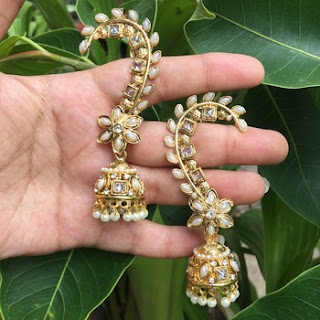The Importance of a Mangal Sutra: A Unique Piece of Jewelry
A mangalsutra is a silver rope of intricate design that hangs between a bride and her husband. It symbolizes the unity of bride and groom. It is a unique piece of jewellery that is worn by married women. It came into existence only in India, and it has been traced its origin back to the ancient Vedic period. A mangalsutra is a symbol of marital unity and love, and it is also a symbol of trust and respect. It is a sacred item that can only be worn by married women. It is not worn by single men, or by widowed women. In the modern world where most people are not married and do not have a husband and a wife, the mangalsutra has become somewhat of an oddity. However, it is still a beautiful piece of jewellery. This article discusses the importance of wearing the mangalsutra, and the reasons why people choose to wear it.
What is the Importance of a Mangalsutra?
Why Wear a Mangalsutra?
A mangalsutra is a silver rope of intricate design that hangs between a bride and her husband. It symbolizes the unity of bride and groom. It is a unique piece of jewelry that is worn by married women. It came into existence only in India, and it has been traced its origin back to the ancient Vedic period. A mangalsutra is a symbol of marital unity and love, and it is also a symbol of trust and respect. It is a sacred item that can only be worn by married women. It is not worn by single men, or by widowed women. In the modern world where most people are not married and do not have a husband and a wife, the mangalsutra has become somewhat of an oddity. However, it is still a beautiful piece of jewellery. This article discusses the importance of wearing the mangalsutra, and the reasons why people choose to wear it.
Is Wearing a Mangalsutra Still Important?
Wearing a mangalsutra is no longer as prevalent as it used to be. Traditionally, the mangalsutra was worn by the bride and the bridegroom at the time of their wedding. However, in the modern world, where there is no marriage and no husband, wearing a mangalsutra has become somewhat of an oddity. Traditionally, the mangalsutra was meant to symbolize the unity of the bride and the groom. However, in today’s world, where marriage is not as prevalent as it used to be, wearing a mangalsutra is no longer a vital need. Although wearing a mangalsutra is not as vital as it was in the past, it is still a very beautiful piece of jewellery. This article discusses the importance of wearing a mangalsutra, and the reasons why people choose to wear it.
Conclusion
Whether a girl is wearing a mangalsutra or not, she will always look beautiful and elegant. A bride wearing a mangalsutra looks even more beautiful. The mangalsutra is a symbol of marital unity and trust between the couple. It is no longer as widespread as it was in the past, but it remains an essential part of Indian culture and tradition. This article discusses the importance of wearing a mangalsutra, and the reasons why people choose to wear it.


Comments
Post a Comment